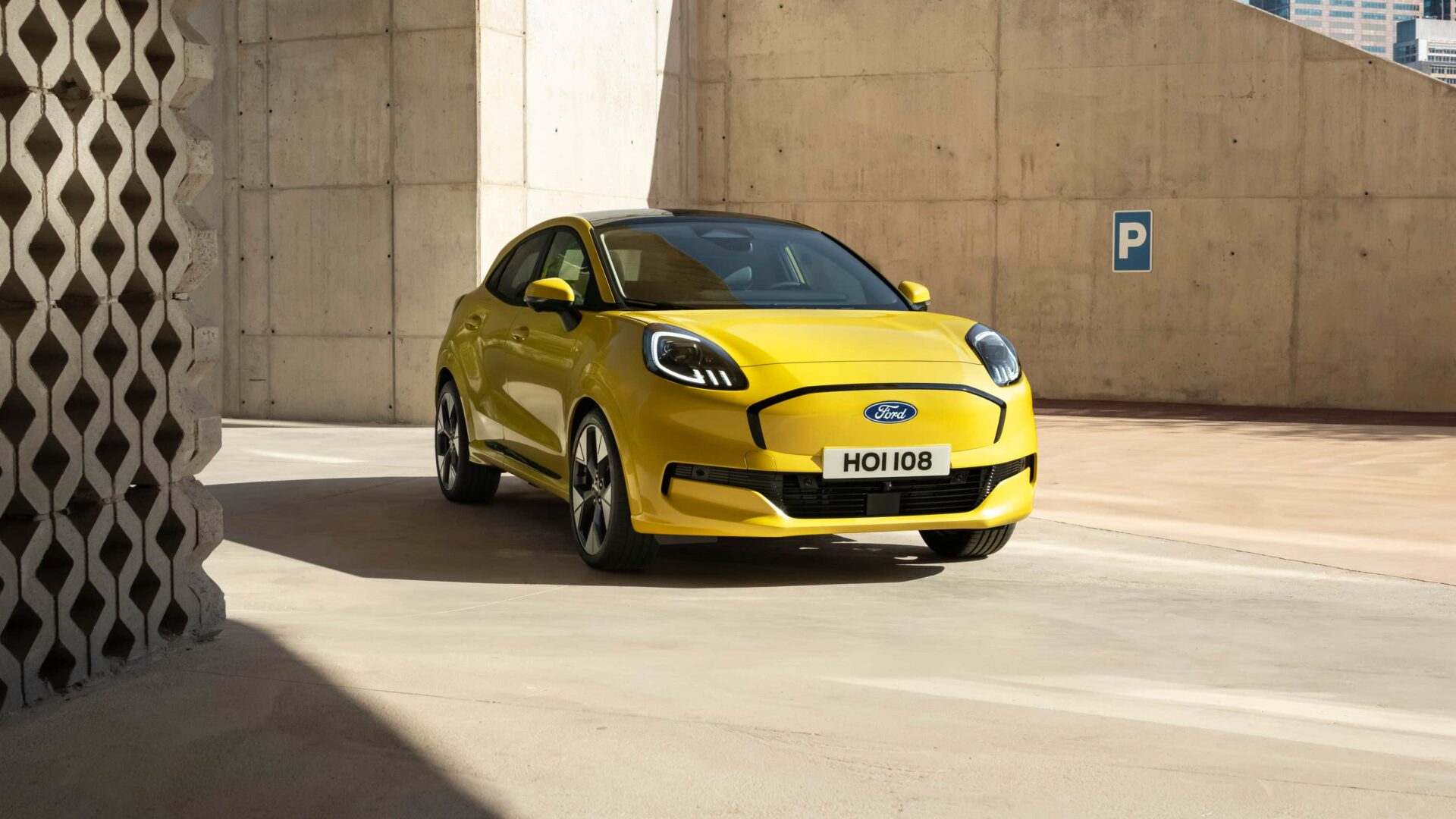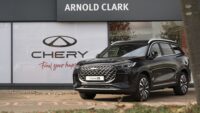The first EVs have finally qualified for the top tier of the government’s Electric Car Grant, with Ford securing the full £3,750 discount on two models.
The brand has announced that both the Puma Gen-E electric crossover and E-Tourneo Courier have met the sustainability criteria and will therefore go into band one of the grant.
It comes after weeks of confusion around the scheme, which have only seen a trickle of vehicles qualify for band two of the grant, which entitles customers a discount of up to £1,500.
Once the full discount has been applied, the Puma Gen-E now starts from £24,745, making it one of the cheapest electric crossovers on the market today.
Meanwhile, the E-Tourneo – which had started at £32,190 – will now be priced from £28,440.
Ford is also helping customers make the switch to electric with its ‘Power Promise’ programme, which will enable private customers to have a free home charger installation, up to 10,000 miles of free charging and an eight-year or 100,000-mile battery warranty.
Lisa Brankin, Ford UK chair and managing director, said: ‘We welcome the Government’s decision to accelerate the transition to electric mobility and are proud that Ford’s commitment to sustainability has been recognised with the full EV grant.
‘With a £3,750 saving available on the Puma Gen-E plus the convenience of the Ford Power Promise, we’re helping to make the switch to electric simpler, more affordable and more rewarding.’
Car Dealer reported yesterday how confusion around the government grant had left EV sales in a ‘holding pattern’, according to Auto Trader.
Despite initial enthusiasm around the scheme, it has now been over a month since the grant portal went live and the two Fords are the first vehicles to qualify for the higher band.
Reacting to the latest announcement, transport secretary, Heidi Alexander, said: ‘We are putting money back in people’s pockets and making it easier and cheaper for families to make the switch to electric, by delivering discounts of up to £3,750 on EVs.
‘Our measures are driving competition in the UK EV market, boosting economic growth and supporting jobs and skills as part of our Plan for Change.’
Four models also added to second band
As well as the two Fords, the government has announced that a pair of Peugeots and a duo of DS models have also now qualified for band two of the grant.
Peugeot’s E-308 and E-408 can both now have the £1,500 discount applied, as can the DS no.4 and electric versions of the DS3.
Nicola Dobson, Managing Director at Peugeot UK, said: ‘With six of our all-electric models now confirmed for the Electric Car Grant, Peugeot is proud to give customers more opportunities to benefit from lower upfront costs and greater choice.
‘From the popular E-208 through to the capacious E-Rifter, and now E-308 and E-408, we have one of the broadest electric line-ups on the market.
‘This government support is welcome to help make the switch to electric more accessible and give consumers greater confidence to choose the electric Peugeot that best fits their lifestyle, while driving forward the UK’s transition to cleaner mobility.
The Electric Car Grant effectively replaces the Plug-In Car Grant, which was ditched by the Tories in 2022, with the package of subsidies reducing electric car prices by up to £3,750 for eligible new electric vehicles priced at or below £37,000.
The Department for Transport says that amounts will be based on a car’s ‘sustainability criteria’ with only the greenest vehicles eligible for the full amount of £3,750.
Meanwhile, band two vehicles will receive up to £1,500.
Both bands require the vehicle to be a brand-new battery-electric model with a retail price at or below £37,000, and both require the manufacturer to have a verified Science-Based Target for carbon reduction.
The key difference lies in the vehicle’s life-cycle carbon emissions with band one only including models with the lowest combined emissions, based on a sustainability assessment that weighs battery production (70%) and vehicle assembly (30%).
Vehicles that meet the minimum sustainability threshold – which has not been made public – but do not rank among the lowest in emissions are placed in band two.
A full breakdown of both bands can be seen below, with more information available on the government’s website.
| Feature | Band One | Band Two |
|---|---|---|
| Grant Value | £3,750 | £1,500 |
| Car Type | Battery Electric Vehicle (BEV) only | BEV only |
| Max Price (RRP inc. VAT) | ≤ £37,000 | ≤ £37,000 |
| Manufacturer must have an SBT | ✅ Yes | ✅ Yes |
| Sustainability Score | ✅ Top-tier (lowest life-cycle CO₂ impact) | ✅ Meets minimum, but not top-tier |
| Emissions from Production | Very low (battery & assembly score highly) | Moderate (acceptable, but not best-in-class) |
Gen-E has potential to be ‘halo model’
The news that models have finally become eligible for the top band will no doubt be music to consumers’ ears, with experts describing the development as ‘hugely significant’.
Iain Reid, head of editorial at Carwow, has even backed the Puma to become a ‘halo model that accelerates momentum’ amid increased interest in electric cars.
He said: ‘The Ford Puma has been the UK’s best-selling car throughout 2025, with more than 30,000 sold by August.
‘Adding the Puma Gen-E to the Electric Car Grant (ECG) scheme is hugely significant. The Puma is a model that resonates instantly — and with the full £3,750 grant now applied, what was already compelling becomes highly attractive.
‘Other eligible models have already seen up to an 85% uplift in consumer enquiries since the scheme began, and the Puma Gen-E has the potential to be a halo model that accelerates that momentum.
‘The timing is especially important: September and March are the two biggest months in the UK car market, often accounting for around a third of annual new registrations.
‘Many consumers deliberately hold off purchasing a new car until the September plate arrives, and this announcement gives them a financial incentive not just to buy, but to go electric.
‘We also know buyers flood Carwow in the run-up to plate change, and this year they’ll be seeing electric vehicles (EVs) at their most competitive prices yet.’


































